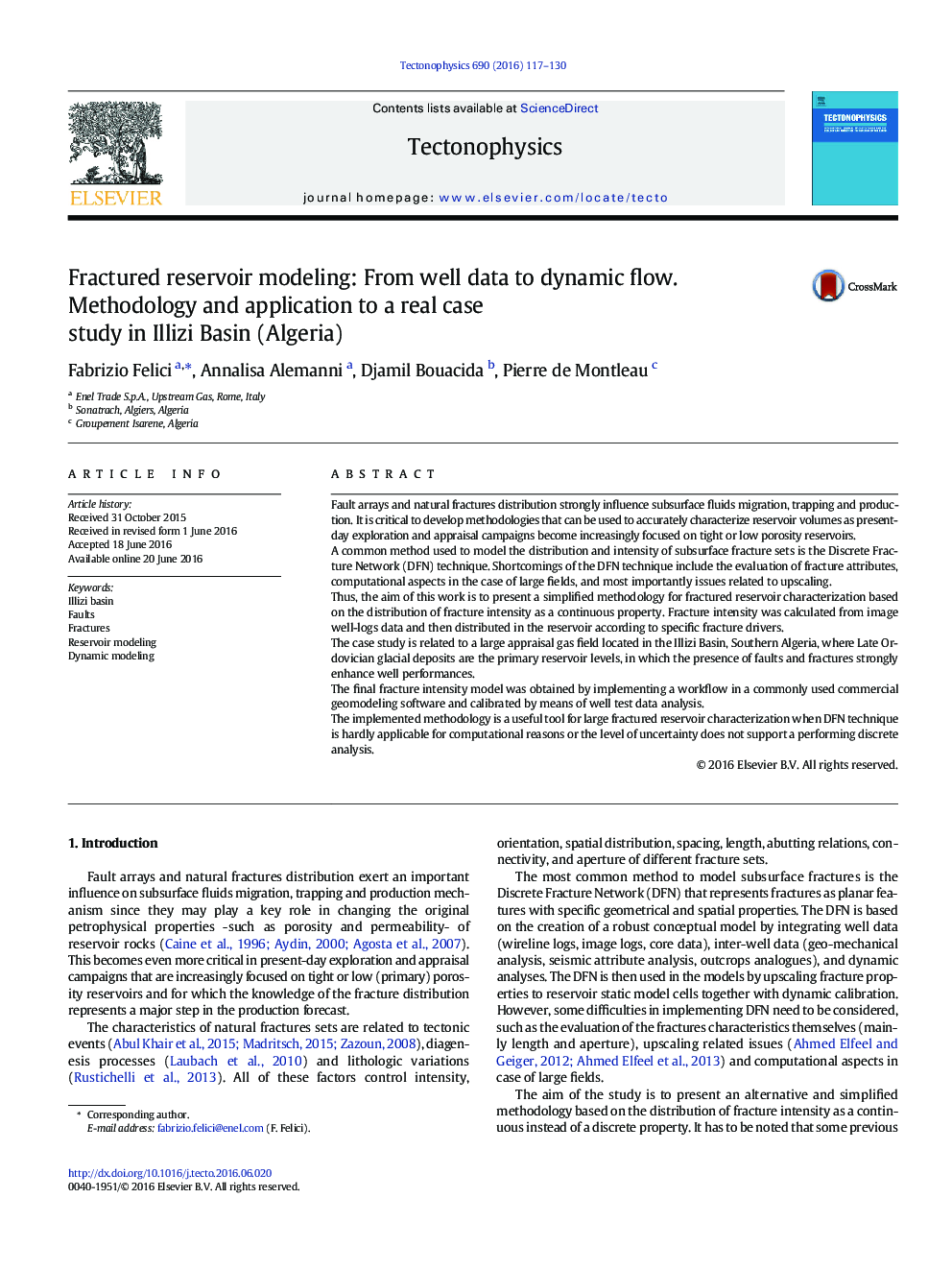| کد مقاله | کد نشریه | سال انتشار | مقاله انگلیسی | نسخه تمام متن |
|---|---|---|---|---|
| 6433287 | 1350548 | 2016 | 14 صفحه PDF | دانلود رایگان |
- A workflow for fractured reservoir modeling and characterization is proposed.
- Fracture intensity is distributed as a continuous property.
- The final fracture model is calibrated by means of well test data analysis.
- The case study is related to a gas field located in the Illizi Basin (Algeria).
Fault arrays and natural fractures distribution strongly influence subsurface fluids migration, trapping and production. It is critical to develop methodologies that can be used to accurately characterize reservoir volumes as present-day exploration and appraisal campaigns become increasingly focused on tight or low porosity reservoirs.A common method used to model the distribution and intensity of subsurface fracture sets is the Discrete Fracture Network (DFN) technique. Shortcomings of the DFN technique include the evaluation of fracture attributes, computational aspects in the case of large fields, and most importantly issues related to upscaling.Thus, the aim of this work is to present a simplified methodology for fractured reservoir characterization based on the distribution of fracture intensity as a continuous property. Fracture intensity was calculated from image well-logs data and then distributed in the reservoir according to specific fracture drivers.The case study is related to a large appraisal gas field located in the Illizi Basin, Southern Algeria, where Late Ordovician glacial deposits are the primary reservoir levels, in which the presence of faults and fractures strongly enhance well performances.The final fracture intensity model was obtained by implementing a workflow in a commonly used commercial geomodeling software and calibrated by means of well test data analysis.The implemented methodology is a useful tool for large fractured reservoir characterization when DFN technique is hardly applicable for computational reasons or the level of uncertainty does not support a performing discrete analysis.
Journal: Tectonophysics - Volume 690, Part A, 28 October 2016, Pages 117-130
